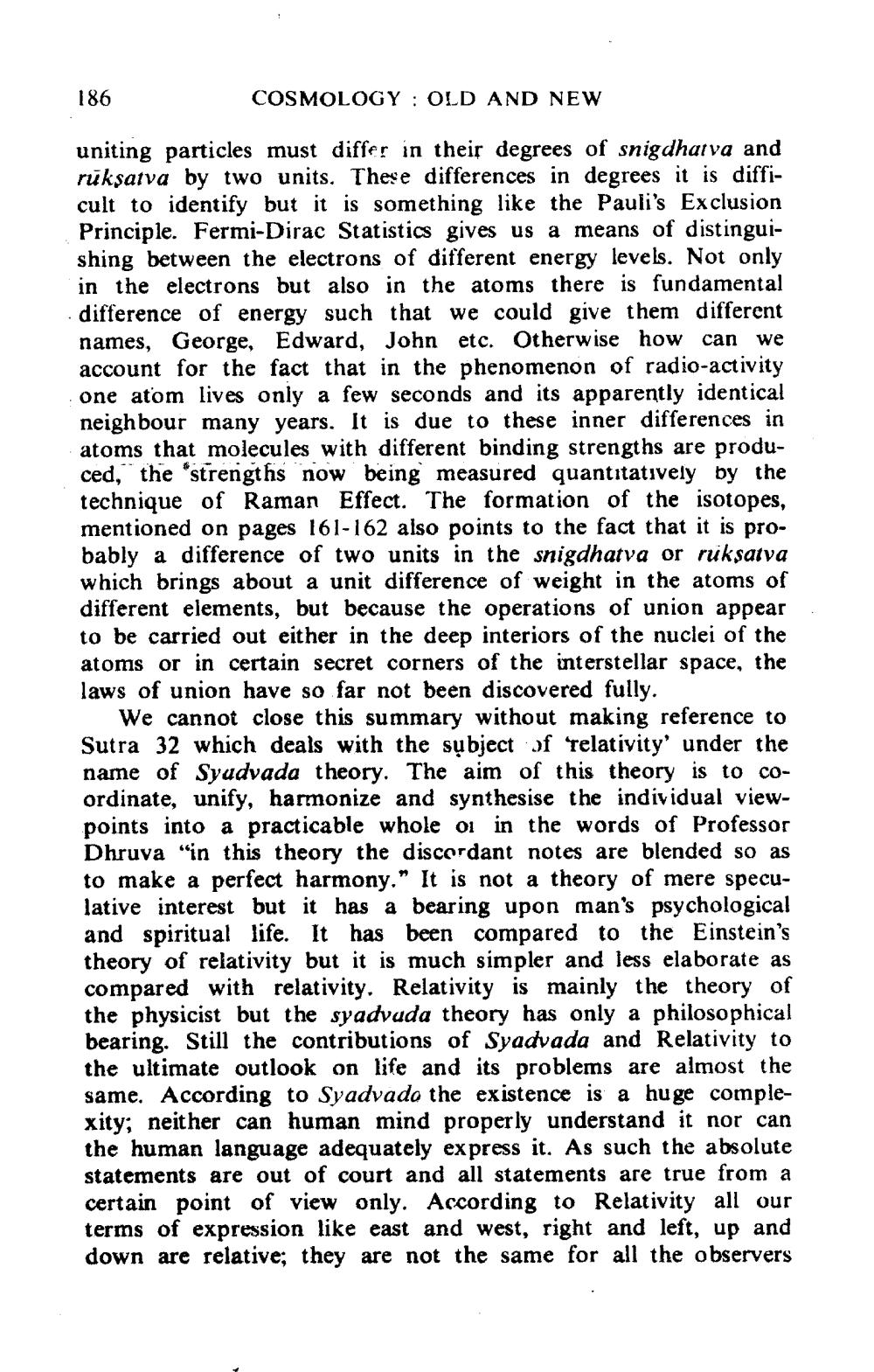________________
186
COSMOLOGY OLD AND NEW
uniting particles must differ in their degrees of snigdharva and rükşatva by two units. These differences in degrees it is difficult to identify but it is something like the Pauli's Exclusion Principle. Fermi-Dirac Statistics gives us a means of distinguishing between the electrons of different energy levels. Not only in the electrons but also in the atoms there is fundamental difference of energy such that we could give them different names, George, Edward, John etc. Otherwise how can we account for the fact that in the phenomenon of radio-activity one atom lives only a few seconds and its apparently identical neighbour many years. It is due to these inner differences in atoms that molecules with different binding strengths are produced, the strengths now being measured quantitatively by the technique of Raman Effect. The formation of the isotopes, mentioned on pages 161-162 also points to the fact that it is probably a difference of two units in the snigdhatva or rukṣatva which brings about a unit difference of weight in the atoms of different elements, but because the operations of union appear to be carried out either in the deep interiors of the nuclei of the atoms or in certain secret corners of the interstellar space, the laws of union have so far not been discovered fully.
We cannot close this summary without making reference to Sutra 32 which deals with the subject of relativity' under the name of Syadvada theory. The aim of this theory is to coordinate, unify, harmonize and synthesise the individual viewpoints into a practicable whole or in the words of Professor Dhruva "in this theory the discordant notes are blended so as to make a perfect harmony." It is not a theory of mere speculative interest but it has a bearing upon man's psychological and spiritual life. It has been compared to the Einstein's theory of relativity but it is much simpler and less elaborate as compared with relativity. Relativity is mainly the theory of the physicist but the syadvada theory has only a philosophical bearing. Still the contributions of Syadvada and Relativity to the ultimate outlook on life and its problems are almost the same. According to Syadvado the existence is a huge complexity; neither can human mind properly understand it nor can the human language adequately express it. As such the absolute statements are out of court and all statements are true from a certain point of view only. According to Relativity all our terms of expression like east and west, right and left, up and down are relative; they are not the same for all the observers




